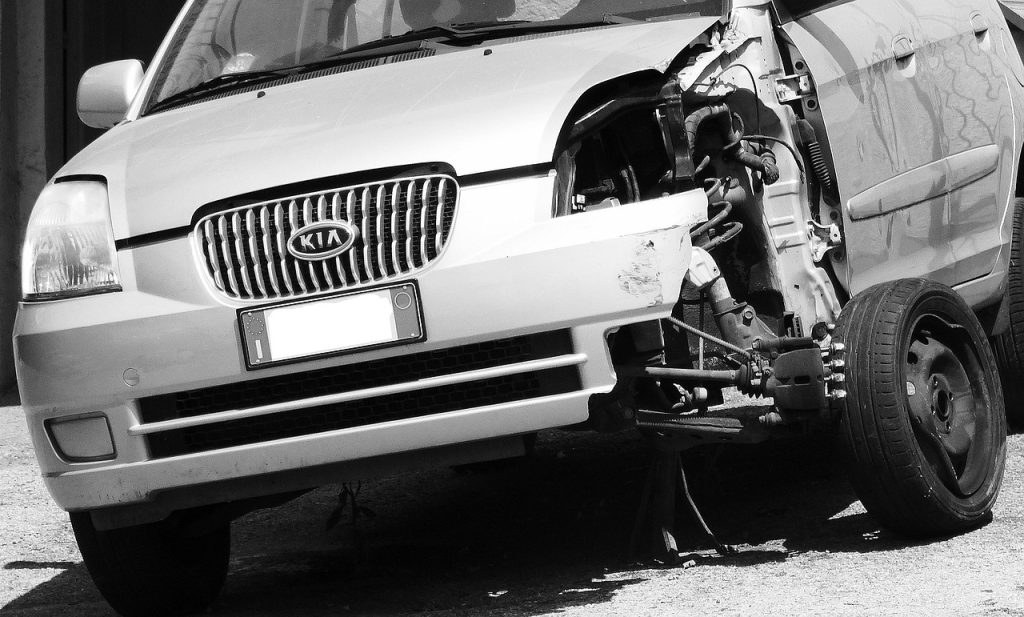Employees who drive company vehicles as part of their job duties may be entitled to compensation if injured in an accident. Depending on the circumstances, an injured worker may file a workers’ compensation claim or a personal injury lawsuit to recover medical expenses and lost wages. Workers’ compensation provides financial benefits regardless of fault but does not cover pain and suffering. In contrast, a personal injury claim requires proving that another party was negligent, but it allows for a broader range of compensation, including emotional distress and full wage recovery.
Understanding the differences between these two legal options is critical when seeking financial relief after a company vehicle accident. Some workers may qualify for both types of claims if a third party is responsible for the crash. However, navigating the complexities of insurance policies, employer responsibilities, and liability laws can be challenging.
Understanding Workers’ Compensation in Company Vehicle Accidents
Employees injured while driving a company vehicle may have the right to file for workers’ compensation benefits. Workers’ compensation provides coverage for medical expenses, lost wages, and rehabilitation costs without requiring the injured worker to prove fault. As long as the accident occurred during work-related duties, the employer’s insurance typically covers the claim.
However, workers’ compensation does not provide damages for pain and suffering. This type of claim is limited to covering direct financial losses related to the injury. In cases where another party’s negligence caused the accident, the injured worker may have additional legal options beyond workers’ compensation to seek full compensation.
When a Personal Injury Claim is an Option
A personal injury claim may be pursued if another driver, a vehicle manufacturer, or even a third-party contractor contributed to the accident. Unlike workers’ compensation, personal injury claims allow injured workers to seek compensation for pain and suffering, emotional distress, and punitive damages in cases of gross negligence. These claims also provide the opportunity to recover full lost wages rather than the limited percentage offered through workers’ compensation.
Filing a personal injury lawsuit requires proving that another party was responsible for the accident. Evidence such as police reports, eyewitness testimony, and expert analysis can help establish fault. Consulting a San Antonio company vehicle accident attorney can help determine whether a personal injury claim is a viable option alongside or instead of a workers’ compensation claim.
Key Differences Between Workers’ Compensation and Personal Injury Claims
Workers’ compensation and personal injury claims serve different purposes when it comes to recovering damages after an injury. The key distinction lies in fault. Workers’ compensation follows a no-fault system, meaning employees are entitled to benefits—such as medical coverage and wage replacement—regardless of who caused the accident. This system prioritizes swift assistance, ensuring injured workers receive support without lengthy legal battles.
In contrast, personal injury claims require proving negligence, meaning the injured party must establish that someone else’s careless actions directly caused their harm. While this process may take longer due to legal proceedings and insurance negotiations, it often results in higher compensation—including damages for pain and suffering, which workers’ compensation does not cover. Additionally, a personal injury lawsuit allows victims to hold the at-fault party accountable, providing both financial relief and a sense of justice.
Determining Eligibility for a Workers’ Compensation Claim
To qualify for workers’ compensation, the accident must have occurred while performing job-related duties. This includes driving for work-related errands, transporting goods, or traveling between job sites. However, accidents that occur during a lunch break or while commuting to and from work may not be covered unless specific exceptions apply.
Employers and insurance companies may attempt to deny claims if they believe the accident occurred outside the scope of employment. If a claim is denied, workers can appeal the decision through the state’s workers’ compensation board. Seeking legal guidance can help ensure that the claim is properly filed and supported with sufficient evidence.
Filing a Personal Injury Claim After a Company Vehicle Accident
If another party’s negligence caused the accident, filing a personal injury claim can help recover damages beyond what workers’ compensation provides. Common causes of these accidents include reckless drivers, defective vehicle parts, or dangerous road conditions. In such cases, the injured worker may file a claim against the at-fault party’s insurance company.
Unlike workers’ compensation claims, personal injury lawsuits can result in compensation for pain and suffering, full wage replacement, and future lost earnings. A successful claim requires proving negligence, demonstrating how the accident led to injuries, and calculating the full extent of financial and emotional damages. Legal assistance is often necessary to navigate these complexities.
Can You File Both a Workers’ Compensation and a Personal Injury Claim?
In certain cases, injured workers may be able to file both a workers’ compensation claim and a personal injury lawsuit. This applies when a third party, such as another driver, contributed to the accident. Workers’ compensation benefits cover immediate medical expenses and a portion of lost wages, while the personal injury claim allows for additional recovery.
However, workers’ compensation insurers may place a lien on the personal injury settlement to recover benefits paid. This process, known as subrogation, ensures that injured employees do not receive double compensation for the same expenses. Proper legal representation can help maximize recovery while addressing these legal complications.
Challenges in Pursuing Compensation After a Company Vehicle Accident
Seeking compensation after a company vehicle accident can be challenging due to legal complexities and insurance disputes. Various factors can complicate the claims process, making it essential for injured individuals to understand potential obstacles.
- Multiple Insurance Policies – Claims may involve both the employer’s commercial insurance and the driver’s personal policy, leading to disputes over which coverage applies.
- Employer Disputes – Employers may argue that the accident was not work-related to avoid liability, especially if the incident occurred outside standard job duties.
- Pre-Existing Conditions – Insurance companies might attempt to reduce or deny claims by attributing injuries to pre-existing conditions rather than the accident itself.
- Liability Disputes – At-fault parties in personal injury claims may contest responsibility to minimize their financial obligations, delaying or complicating the compensation process.
Understanding Employer Liability in Company Vehicle Accidents
Employers may be held liable for accidents involving company vehicles under certain legal principles. If an employee was performing job-related duties at the time of the crash, the employer may be responsible for damages through a legal concept known as vicarious liability. This means that even if the employer was not directly involved in the accident, they could still bear financial responsibility if the employee was acting within the scope of their employment.
However, employer liability is not automatic. If the worker was using the company vehicle for personal errands or engaging in reckless behaviour, such as driving under the influence, the employer may argue that they are not responsible for the damages. Employers may also have insurance policies that cover liability in these cases, which can impact the type of claim an injured worker can file. Seeking legal advice can help injured employees determine whether employer liability applies to their case and what compensation options are available.



